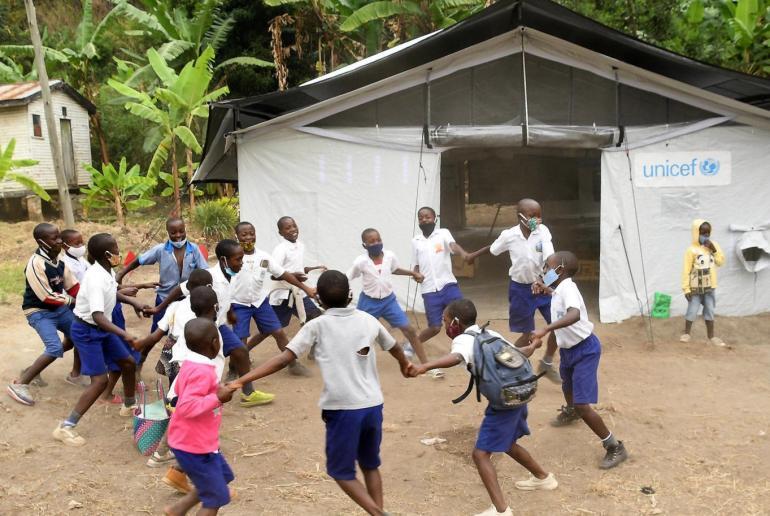
EU adopts new rules to significantly cut packaging waste with re-use targets
The European Union has formally adopted a regulation on packaging and packaging waste. The new ...

UNICEF is deploying 457 high performance tents to support school reopening in flood-affected districts in Uganda, marking the first time the newly innovated tents are rolled out in an emergency.
The unique 72 square meter tents – which can be easily transported and reused – include ventilation systems and elevated shade nets to keep internal temperatures cooler in hot and dry climates; electrical and solar kits for lighting and energy; and three-layered windows to help block out disease-carrying mosquitos. The straight walls allow for more space for social distancing.
“For nearly two years, children across the country have suffered prolonged pandemic-related school closures, combined with extreme weather events that have destroyed schools across the country. Their education and well-being have suffered immensely. UNICEF is working with the government to help every child recover the education they have lost,” said Dr. Munir Safieldin, UNICEF Representative in Uganda. “The new tents will provide safe environments for children in disaster-affected areas, ensuring they continue to learn, play and interact.”
Children in Uganda endured the longest school closures globally, missing 83 weeks of their learning. The government projected a third of schoolchildren would drop out completely. The devastating impact of COVID-19 restrictions has been compounded by heavy flooding in some parts of the country.
At the end of January, UNICEF installed seven high performance tents in Kasese, western Uganda, where water damage caused by heavy flooding destroyed schools. Additional ordinary tents have been installed in districts including Ntoroko, Sheema and Buliisa. UNICEF is also providing 540 desks and 30 blackboards to schools affected by flood damage.
Uganda was one of three countries to field test the prototypes, which were used as health centres for South Sudanese refugees in the northwest of Uganda, Bidi Bidi Refugee Settlement, Yumbe. UNICEF worked hand-in-hand with the manufacturers to refine and improve the product’s features, particularly those that keep the tents cool in hot and dry climates. The tents were also tested in the Philippines for wet and humid weather and Afghanistan for extreme cold.
“It’s fantastic to see these new and innovative tents being rolled out to support children. The straight walls mean there’s more space in the tents for desks and social distancing, while the improved ventilation will keep these classrooms cooler so the children can focus on their lessons,” says Kristoffer Gandrup-Marino, Chief, Product Innovation, UNICEF Supply Division.
The European Union has formally adopted a regulation on packaging and packaging waste. The new ...
Inaugurating the Abydos Solar Power Plant in the Upper Egypt governorate of Aswan represents a ...
Businesses that fail to adapt to climate risks like extreme heat could lose up to ...


اترك تعليقا